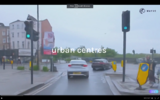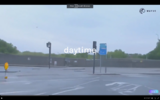Yeah. This is an interesting question that experts are still debating: should AVs have a distinct look that makes them easily identifiable as an AV or should AVs blend in and look like any other normal vehicle? As you point out, if the AV looks different then it will change the behavior of other road users. This could be a good thing in some cases if it leads human driven vehicles to drive more cautiously. Or could it cause more hostility towards AVs like we see in SF with the coning? I think one argument for making AVs look normal is that you want all vehicles to behave normally and not drive differently. Plus, for consumer cars, there is the aesthetic argument that people want a "nice looking" car, so they don't want to see big sensors on the car. It is one reason why Tesla went vision-only. Personally, I think I learn towards making AVs look different. I think it is important for other road users to know that a car is an AV since AVs do drive differently than humans. If AVs look like normal cars, people might assume it is driven by a human and expect certain behavior and then get surprised when the car drives differently. This could cause humans to make prediction mistakes about how the AV will drive, which could cause accidents.





